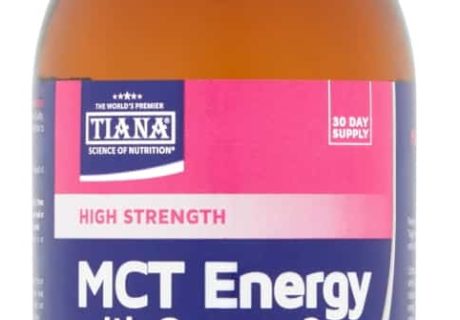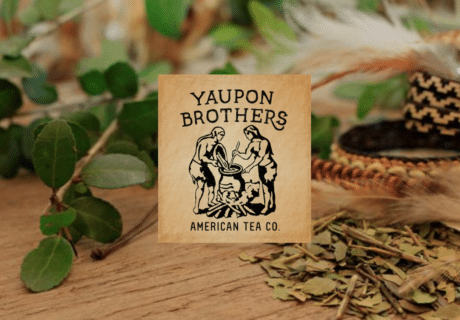In the weeks before Clearspring celebrated its 25th birthday, Christopher Dawson, Maria Dawson and Zoe West sat with Rosie Greenaway and reflected on where it all began, why it all began and how the brand’s products represent the future of food
Let’s rewind to what originally inspired your vision
Christopher Dawson: 1972 was the beginning for me. I was in New Zealand, aged 19, and it was the time of the frightening Vietnam War with the mass slaughter of civilians. Time for reflection, I thought, as surely this cannot be the way to fast-track world peace. Then I looked at agriculture. New Zealand then had a population of just three million people and 60 million sheep. If we are the top of the evolutional pyramid with the most developed digestive system, why are we slaughtering animals for human development and destroying the natural landscape in the process? There was something wrong there; and a gross misuse of nature. I spent 12 months visiting and working on organic farms in four different agricultural sectors in New Zealand. In April 1974 I made a 36 hour flight to the UK, to further my studies on organic farming and food distribution.
When Clearspring began in 1993, you were in Japan. What was your focus there?
CD: The vegetarian diet in the 1970s was often the same plate without the meat; it was pretty boring. A friend suggested trying Japanese miso soup. I tasted it and thought “I might stay vegetarian!” In 1979 I hopped over to Japan to study their food culture. I discovered that during their 250 years of isolation they’d learnt how to sustainably cultivate foods both on the land and on the coastal seas. I learnt about soya beans and then learnt that the mass agricultural system in South America is destroying the Amazon to grow them for animal food. I did a calculation: if you take 100kg of soya beans to make miso, you will get 20,000 bowls of miso soup; you take the same 100kg of soya beans, you will get a hundred 10g servings of meat. I decided to study more about Japan. I spent 18 years there, converting the many producers to organic. That was enough; I’d done my job. I took what I’d learnt in Japan, and their products, and made it my mission to put them into worldwide distribution.
Was miso the catalyst?
CD: Yes! I saw that the Japanese had learnt how to take products from nature and get the most nutritional bio-availability from the vegetable kingdom. Nobody else had done that before. They did it with subtle fermentation, whereas in the West we took animal food and converted it. Everybody was talking about food shortages and the necessity for GM. The reality is different. There is an abundance in nature beyond our imagination.
Does the negative reputation of soya concern you?
Maria Dawson: Consumers go on Instagram and look to influencers who say soya is bad for you. There is so much misconception. I’m sure there are people who can’t tolerate soya, but many people don’t know the difference between soya milk, tofu, miso, soya sauce, tamari and tempeh; it’s almost two separate worlds. Looking at soya from a different perspective and at the way the fermentation process works, it’s a different approach. Zoe and I quite often have the discussion that it’s our duty to get that message across to consumers. Koji (the culture) fermentation breaks down the amino acids in soya, the resulting products becoming a digestive aids. I can’t digest soya milk, but would I stop drinking miso or using soya sauce? I don’t think so! We travel with instant miso soup in our suitcase whenever we go to various shows!
CD: In Japan they call soya the ‘meat of the fields’ because they know that what’s available through the right fermentation is real gold. It’s a gem.
When you started Clearspring, what did you set out to achieve?
CD: I was trying to bridge the gap between cultures, because so much of the violence and wars in the world is a result of misunderstandings between cultures. However, there’s one thing that the Palestinians and the Israeli people agree on: when a hummus is good or bad! I’m trying to get people to relate to food and help bridge cultural differences. That’s one of the reasons why in 1977 I called my store in Old Street, London: East West Natural Foods.
How will you fit into the zero waste movement?
Zoe West: [Clearspring has been] modernizing from the beginning, having to adapt and pivot as the industry changed. It’s quite interesting with all of the zero waste stores. With the bulk range, you’re going to start seeing a lot of bulk matcha teas, flours and pasta. Help-yourself miso is definitely a possibility in some stores, and we have those products ready.
Let’s talk about your producers in Japan.
CD: We have 40 to 50 producers. If I said tomorrow, “I’ve had enough of the vagaries of currency markets, it’s too painful, we’ll stop,” then 30% of those companies would be bankrupt. Can you imagine? Just like that. Not in two weeks; in one day. Because national brands are so strong in Japan that people are blinded into believing the national brand is the real thing. It’s that 80:20; the 20% national brands doing 80% of the business. The other 80% just can’t survive. Artisanal food production is a dying tradition and Clearspring is the company keeping it alive … upholding the Japanese food tradition. It’s a pretty frightening and challenging situation.
MD: Most of them are family businesses. The longest running one is our tamari producer. The youngest son visited us last year. He was astonished to see his product on the shelf. He said: “I’ll make sure what my grandparents did keeps going,” and he went home with the biggest passion. That’s what we’re keeping alive; not just a business – their family story. Tamari takes over two years to make. They can’t put a stopwatch on it because depending on how hot the summer is, the fermentation process changes, so they call it ‘two summers’ – it’s really lovely.
Does that make balancing supply and demand challenging?
MD: Yes, because these are authentic, traditional artisanal foods.
CD: The conventional, national brands can ferment soya sauces and miso in six months by temperature control. They’re not reliant on whether the summer’s hot or cold. Their investment time is much less.
What has changed during Clearspring’s lifetime?
CD: Everything the old pioneers like myself threw out from the kitchen – the white flour, white sugar, refined dairy – are all back again. How? Organic certification enabled them. The innocent consumer thought that because a food is certified organic it should be safe, but in fact the conventional – that 20% of food producers – wanted to use their machinery and saw this opportunity to make a premium and they produced organic. But they couldn’t do it with wholegrains because the machines can’t handle them, so they used white flour, white sugar. That’s been the biggest challenge for us.
MD: I think that’s where we stacked our brand promise, because I’m sure some other organic brands would say “What’s wrong with organic sugar? At least it’s organic sugar, not conventional sugar,” but Christopher’s view is that sugar production itself damages the soil and using huge volumes of water, therefore we say no to refined sugar. We have over 250 products; none of them contain refined sugar, no matter what. There are many organic and plant-based companies out there, and many people trying to do sugar-free, but you don’t see many companies that are trying simultaneously to do all three – vegan, organic, no added sugar – because it’s not easy, it’s not simple. There are so many vegan start-ups now, and there’s much vegan innovation. It feels like the market is finally catching up with us and what we’ve been shouting for many years.
How does packaging factor into your NPD?
MD: We don’t like tinned food. The only tin we have is coconut milk. I’m not keen on launching another tinned product.
CD: Aluminium production in New Zealand destroyed whole areas of nature.
MD: I’m not saying we’re perfect with packaging, we’ve got plastic in there too, to reach more customers through conventional sales networks. We know it’s a big topic. We welcome the noise; it’s good that everybody’s waking up. We’re looking at what we can do without compromising on food safety.
You must be pleased with the attention seaweed is attracting?
MD: Everybody’s interested in seaweed, but they still don’t know what to do with it. If you aren’t brought up eating it, you don’t know how to use it. That’s how our Sea Veg Crispies came about; we saw a future in it. They are an ‘any time’ healthy snack and you can enjoy them with a beer or glass of wine if you like. We thought that this would be the best bridge to get people to eat seaweed in everyday life without being scared.
What’s the most important thing to you as food manufacturers?
CD: For me it all comes back to the water, the soil and the air; that’s the basis of our NPD. People ask why we don’t sell coffee. How many litres of water are required for one kilo of coffee? 18,000. It’s phenomenal. It’s not a daily food for the future because the cost on the ecosystem is too high. Whereas with matcha, you grind it – it’s ready.
MD: We want to look after the environment, the eco system, and create a food for the next generation, because without water and topsoil there will be no food – we won’t even have a planet to live on.
So you’re providing ecological solutions to the future of food?
CD: Yes! It’s a total ecological approach to food without compromise.
MD: We understand not everybody can afford premium organic, but it gives people the choice. Gluten-free was big; now it’s vegan. What next? I think people will start looking into food traceability. They’re already talking about farm to table, and what happens all along the supply chain.
CD: The best we can do for mankind is set a food benchmark. Whether we succeed financially is not my primary focus. We want to raise the bar. It has been reduced so badly … much of the authenticity of organic food has been lost, what we fought for in the 1970s. We want to build a lifetime relationship with our consumers, so they will trust us all the way. An issue which bothers me is that salt quality is not part of the organic certification of processed foods. Time and time again I have had to demand organic producers to use mineral rich sea salt in the products that we contract with them. Many producers of organic foods are using cheap mined salt, as there are no demands in the organic certification about salt quality or quantity. It’s sad, because good quality sea salt is vital for good health. The latest trend to reduce salt is good. Clearspring looks at all the ingredients going into the organic product, including the salt quality. We are being challenged on the price of our authentic fine foods and especially our artisanal Japanese foods, but product price simply reflects the quality. Conventional Japanese food companies and often organic food processors are using poor quality salt. I will keep on this path and am now lucky to have three of our family children continuing my work. In good faith, in 2043 we’ll be celebrating our 50th anniversary, still fighting to uphold a sustainable food benchmark.





